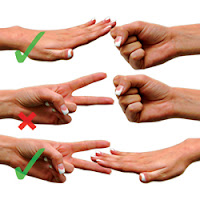Here is my redesign of the childhood game "Go Fish":
Intense “Go Fish”
Author: Samantha Moses
Date: 2/28/12
OVERVIEW
This game will create a more intense version of the game “Go Fish” that encourages more competition between players through use of a point system, time limit, and rounds. These components and competitive aspect of the game will target a broader audience, rather than just children. In fact the target audience will be older kids and even adults because there will be a need to some math.
The game will be played through use of a standard deck of 52 cards. However, there is the hope that this game can one day be turned into an online game or used as an App for platforms such as the iPod, iPad, iPhone, or Android. The player can play against a bot on these platforms with the ability to choose between a number of how many bots they would like to play against.
WHY ARE WE MAKING THIS GAME?
“Go Fish” is a game that is often associated with one’s childhood, and so we would like to have this game tap into the nostalgia of slightly older players who want to relive a fun childhood game in a way that it is more intense, advanced, and age appropriate to them. It would create a new and fun way to embrace a childhood game and make it more intense and competitive.
If the game can be expanded across the different platforms, it can improve the game, and bring it back into popularity through use of modern technologies. Not everyone has a deck of cards on them, but most people do, however, have their cell phones, laptops, and iPads with them when they are on the go. Having the player play against a bot, allows for immediate and continuous gameplay, rather than waiting for someone to respond to you like social network games such as “Words With Friends.”
WALK US THROUGH THE GAME!
The player first must choose a platform: either a standard deck of cards, or a technological platform such as cell phone, iPad, or an online game.
Players are first dealt their cards. Next, the first player progresses to ask a player for a card and if he does not get that card from the player, he will draw a card from the deck. If the player does receive the card he asked for then he puts down his cards that match. The game progresses the same for each player until each round is over. At the end of each of the rounds, the points get added up. The player with the highest score combined across all of the rounds will win the game. After game is over, game can be restarted and played again for some more fun!
SIMILAR GAMES






















